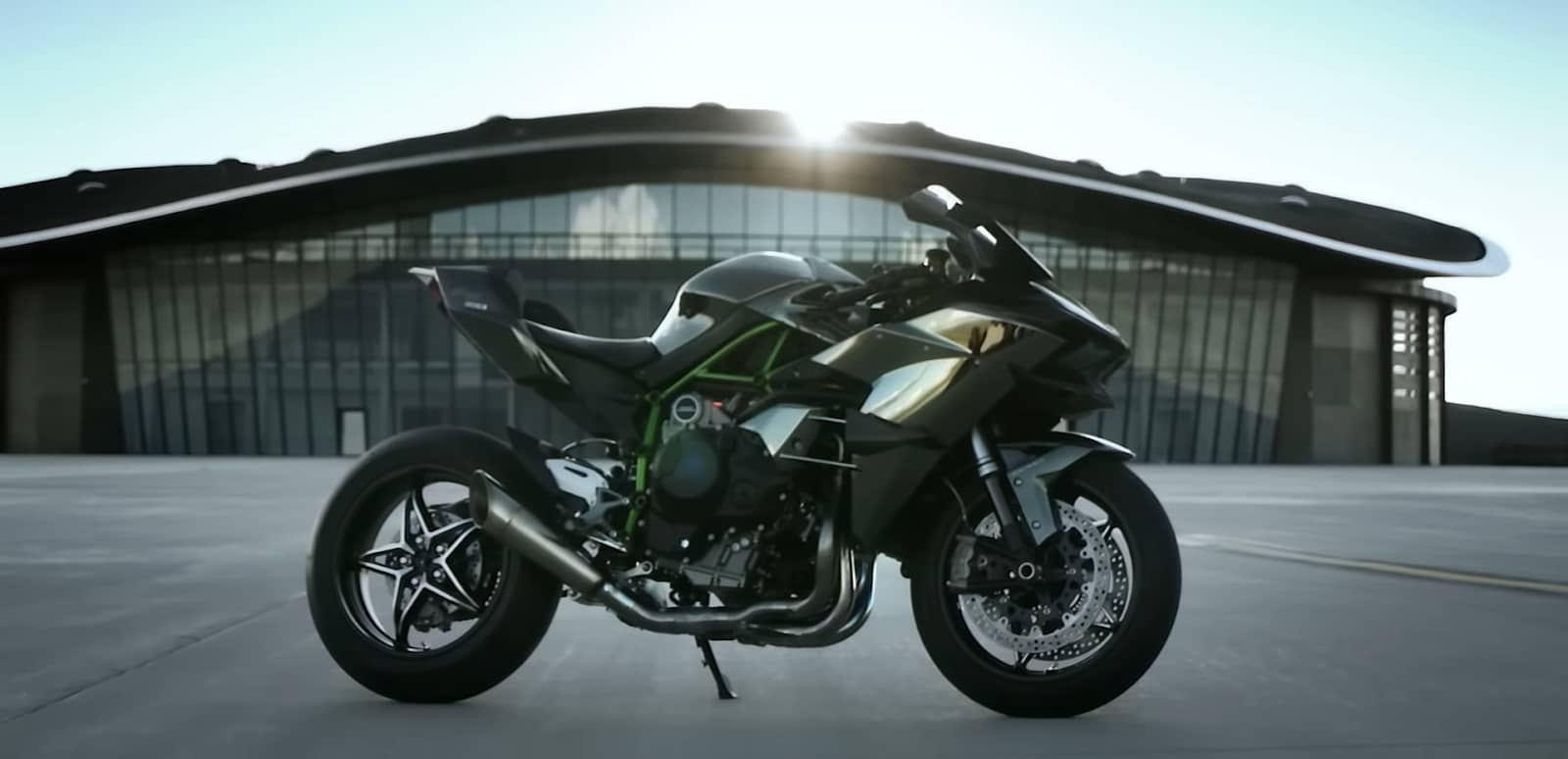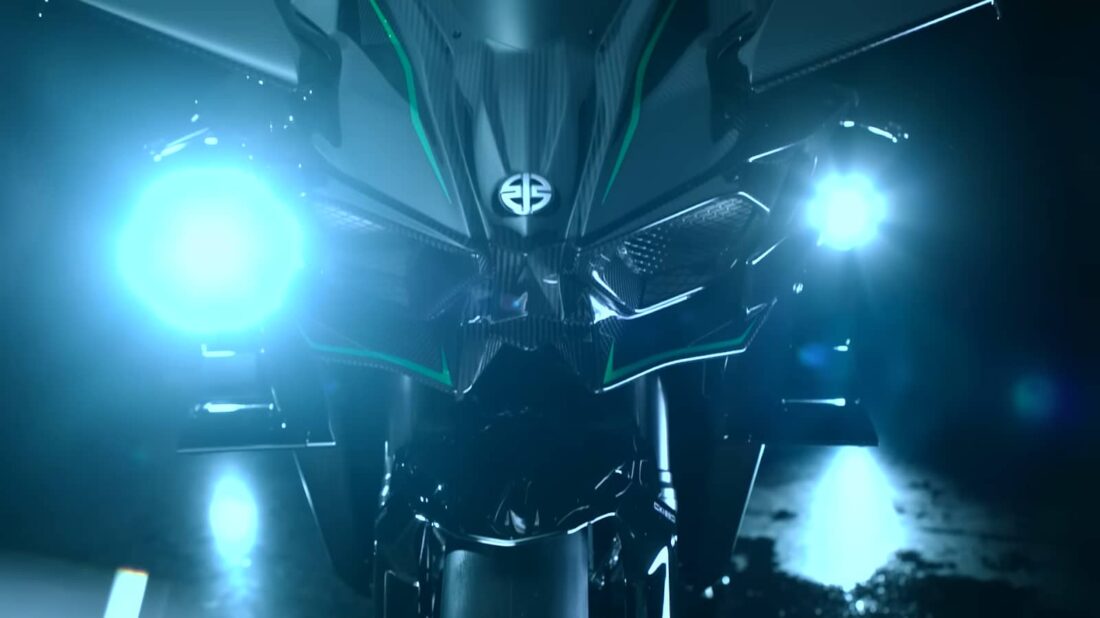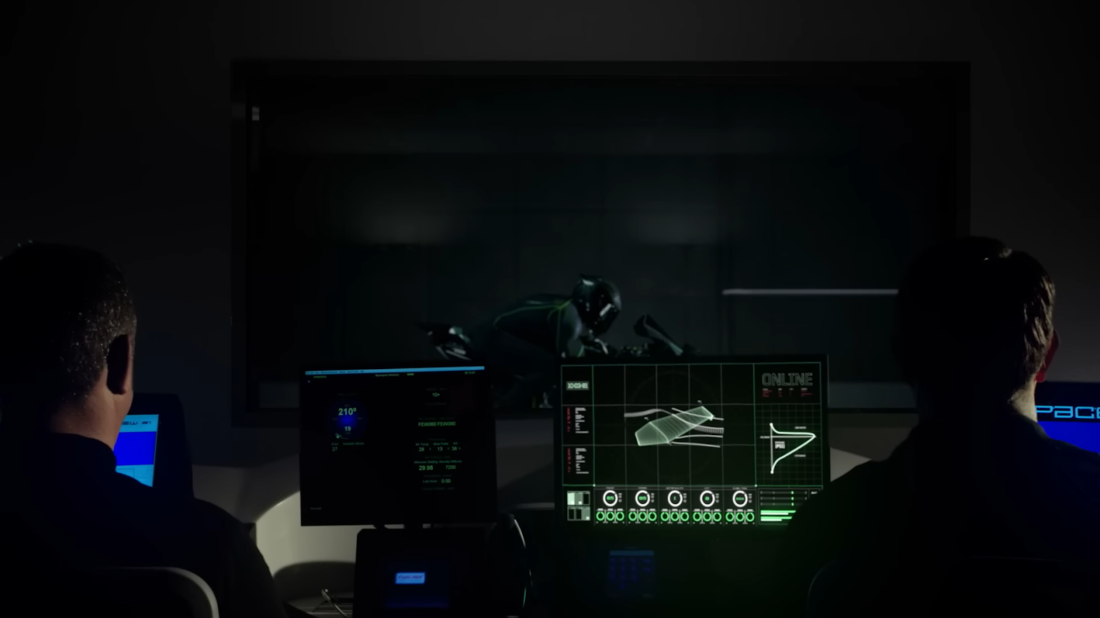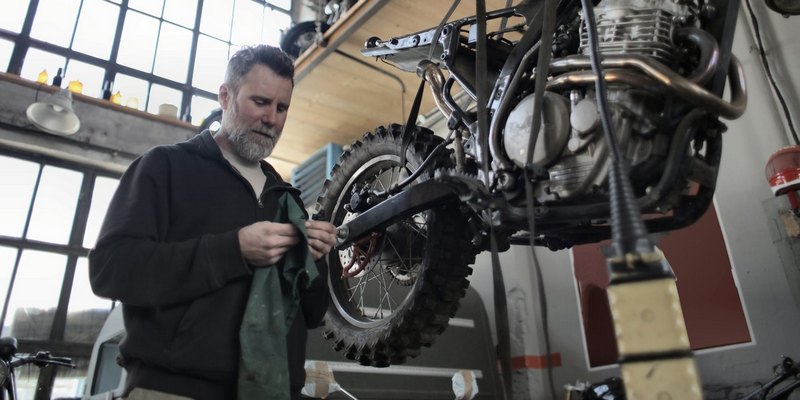A Look at the Kawasaki Ninja H2R Top Speed

The Kawasaki H2R emerges as an unparalleled force in the realm of motorcycling, redefining the limits of acceleration and power. Zooming from 0 to 200 mph in a mere 16.83 seconds, it stands as a testament to Kawasaki’s relentless pursuit of innovation and performance.
You may also like to explore the top speed capabilities of other high-performance motorcycles, such as the GSXR 750, in comparison to the renowned Kawasaki Ninja H2R.
Kawasaki H2R’s Game-Changing Ride
Back in 2015, when the H2R first graced the motoring scene, it shattered expectations. Many believed the era of hyperbikes and top-speed wars had ended with manufacturers agreeing to cap motorcycle speeds at 300 km/h. Yet, Kawasaki had different plans.
In a bold move, Kawasaki Heavy Industries unleashed the H2R, flaunting its staggering 300+ horsepower and supercharged engine – a rarity in the motorcycle world. This departure from convention stunned enthusiasts, reminiscent of the unexpected introduction of the Peugeot JetForce, a supercharged scooter, years prior.
While liter bikes traditionally eschewed superchargers, Kawasaki defied norms, pushing boundaries with the H2R’s unrivaled power. And although not intended for road use, the H2R’s sheer dominance beckons enthusiasts to explore its capabilities, whether on the track or through street-legal modifications.
Enter the road-legal sibling, the Kawasaki H2. With a formidable 200 horsepower, it offers a tantalizing glimpse into the H2R’s prowess. Moreover, aftermarket modifications have birthed H2 variants surpassing even the H2R in power and acceleration, transforming them into veritable speed demons capable of reaching speeds nearing 400 km/h.
In essence, the legacy of the Kawasaki H2R extends beyond its title as the fastest-accelerating motorcycle. It symbolizes a paradigm shift in motorcycle engineering, where boundaries are pushed, conventions challenged, and speed elevated to an art form.
Unveiling the Real Performance of the Kawasaki H2R

Delving into the true speed capabilities of the Kawasaki H2R reveals a stark contrast between manufacturer claims and actual performance. Despite boasting peak crank horsepower figures of 310 to 326 (with ram air), the H2R typically generates a more modest 230-240 horsepower at the wheels on a Dynojet Dynamometer.
While enthusiasts may anticipate additional power once in motion, the discrepancy between claimed and actual horsepower remains undeniable. This discrepancy challenges conventional expectations, as the H2R falls short of the power levels suggested by Kawasaki’s figures.
Despite conflicting opinions and data, attempts to validate the H2R’s speed often rely on anecdotal evidence, such as the Sofuoglu 400 km/h record attempt. However, such attempts may overstate actual speeds due to inaccuracies in motorcycle speedometers, which can over-read by up to 12%.
Ultimately, while the allure of high-speed records may captivate enthusiasts, the reality of the H2R’s performance underscores the importance of separating hype from empirical evidence.
While certainty eludes me, considering it was likely a PR maneuver, one could reasonably speculate that the specific H2R in question was likely tweaked and more potent than a standard model.
- A factory Kawasaki H2R isn’t even geared to reach a genuine 400 km/h;
- Normally, the H2R achieves its peak power output of 230 to 240 hp at 12,500 rpm, resulting in an actual speed of 327 km/h in 6th gear and slightly over 200 mph;
- On a stationary dynamometer, the H2R maintains its power until approximately 13,000 rpm before gradually diminishing;
- At high speeds, it might sustain its power output until the rev limiter kicks in due to the ram air effect, but this can’t be accurately assessed on a dynamometer since replicating a 200 mph wind is impossible;
- With stock gearing, an H2R would need to rev up to 15,250 rpm to achieve the coveted 400 km/h mark, which it doesn’t reach;
- Even in 6th gear, the H2R struggles to surpass 14,000 rpm despite the optimistic readings on its tachometer;
- At 14,000 rpm in top gear with stock gearing, the speed would be 367 km/h and 228 mph. However, the H2R lacks the power or aerodynamics to sustain such high revs.
Kevin Cameron of Cycleworld magazine once suggested that with the right gearing, the H2R could theoretically exceed 400 km/h.
With all due respect to him, he was mistaken, likely influenced by Kawasaki’s claim of 326 hp at the crank with ram air, which would translate to approximately 290 hp at the wheels, considering typical transmission losses of around 10%.
A bike with 290 hp, even one with substantial aerodynamic features like the Kawasaki H2R, might conceivably reach 400 km/h, but not one with 230-240 hp at the wheels.
Thus, his assertion of it being “theoretically possible” holds true, but the H2R didn’t generate anywhere near the power he based his claim on.
The optimal scenario for a standard H2R is around 350 km/h. However, typically it would range between 330-350 km/h, depending on the specific bike, rider, and environmental conditions.
Kawasaki H2R Acceleration Analysis

Despite potential variations in peak power output, the Kawasaki H2R remains unmatched among production motorcycles.
Generating 230/240 horsepower at the wheels, similar to contemporary superbikes, this machine’s short wheelbase demands a minimum speed of 100 mph/160 km/h to fully exploit its capabilities.
However, to truly unleash the H2R’s potential, speeds exceeding 125 mph/200 km/h in 3rd or 4th gear are necessary. Even then, managing its ferocity becomes a challenge as the front wheel seeks elevation or the rear struggles for traction.
While the H2R’s acceleration off the line may not surpass that of an average liter bike, it achieves 0-60 mph in 2.93 seconds and 0-100 mph in 5.12 seconds with persistence, figures comparable to its counterparts.
Though wheelie and traction control systems can hinder its performance, optimal results are achieved with these aids disabled, demanding skillful handling.
Expectations of dominating every street race are misguided, as fully unleashing the H2R’s potential from a standstill is formidable.
The H2R truly shines on highways or expansive runways, where it can assert its dominance over competitors.
For competitive endeavors, embrace the track or drag strip, as the uncompromising design of the Kawasaki H2R renders it unsuitable for public roads.
Despite potential variations in peak power output, the Kawasaki H2R remains unmatched among production motorcycles.
Generating 230/240 horsepower at the wheels, similar to contemporary superbikes, this machine’s short wheelbase demands a minimum speed of 100 mph/160 km/h to fully exploit its capabilities.
However, to truly unleash the H2R’s potential, speeds exceeding 125 mph/200 km/h in 3rd or 4th gear are necessary. Even then, managing its ferocity becomes a challenge as the front wheel seeks elevation or the rear struggles for traction.
While the H2R’s acceleration off the line may not surpass that of an average liter bike, it achieves 0-60 mph in 2.93 seconds and 0-100 mph in 5.12 seconds with persistence, figures comparable to its counterparts.
| Speed | Time |
|---|---|
| 0-10 mph | 0.48 |
| 0-20 mph | 0.96 |
| 0-30 mph | 1.44 |
| 0-40 mph | 1.93 |
| 0-50 mph | 2.43 |
| 0-60 mph | 2.93 |
| 0-70 mph | 3.44 |
| 0-80 mph | 3.97 |
| 0-90 mph | 4.50 |
| 0-100 mph | 5.12 |
| 0-110 mph | 5.70 |
| 0-120 mph | 6.30 |
| 0-130 mph | 6.99 |
| 0-140 mph | 7.66 |
| 0-150 mph | 8.38 |
| 0-160 mph | 9.31 |
| 0-170 mph | 10.31 |
| 0-180 mph | 11.77 |
| 0-190 mph | 13.57 |
| 0-200 mph | 16.83 |
| 60-130 mph | 4.01 |
| 100-160 mph | 4.18 |
| SS/QM | 9.76/164 mph |
| SS/KM | 17.01/201 mph |
| SS/Mile | 23.508/208 mph |
| Top Speed | 212 mph |
Though wheelie and traction control systems can hinder its performance, optimal results are achieved with these aids disabled, demanding skillful handling. Expectations of dominating every street race are misguided, as fully unleashing the H2R’s potential from a standstill is formidable. The H2R truly shines on highways or expansive runways, where it can assert its dominance over competitors. For competitive endeavors, embrace the track or drag strip, as the uncompromising design of the Kawasaki H2R renders it unsuitable for public roads.
Conclusion
The Kawasaki H2R has solidified its place in the annals of motorcycling history as one of the most radical and fastest bikes ever sold to the public. While it never hit the claimed 400 km/h, the H2R’s reputation as a speed powerhouse remains untouched. The H2R represents Kawasaki’s audacity and innovation in pushing boundaries, resulting in a motorcycle that outpaces almost all two-wheeled and even some four-wheeled vehicles on the market. Despite controversial speed claims and power discrepancies, the Kawasaki H2R is unassailable in its acceleration and speed prowess.
